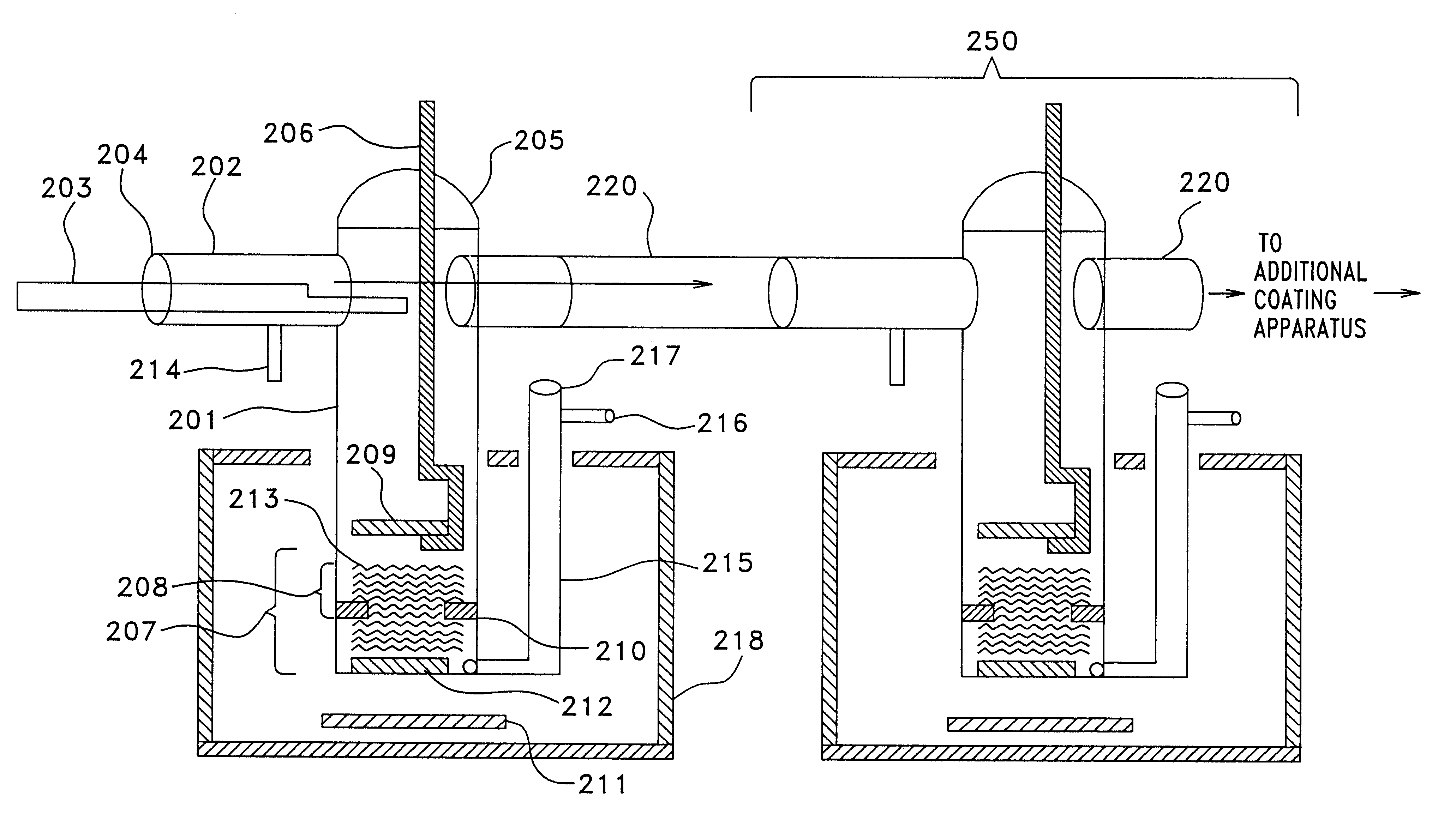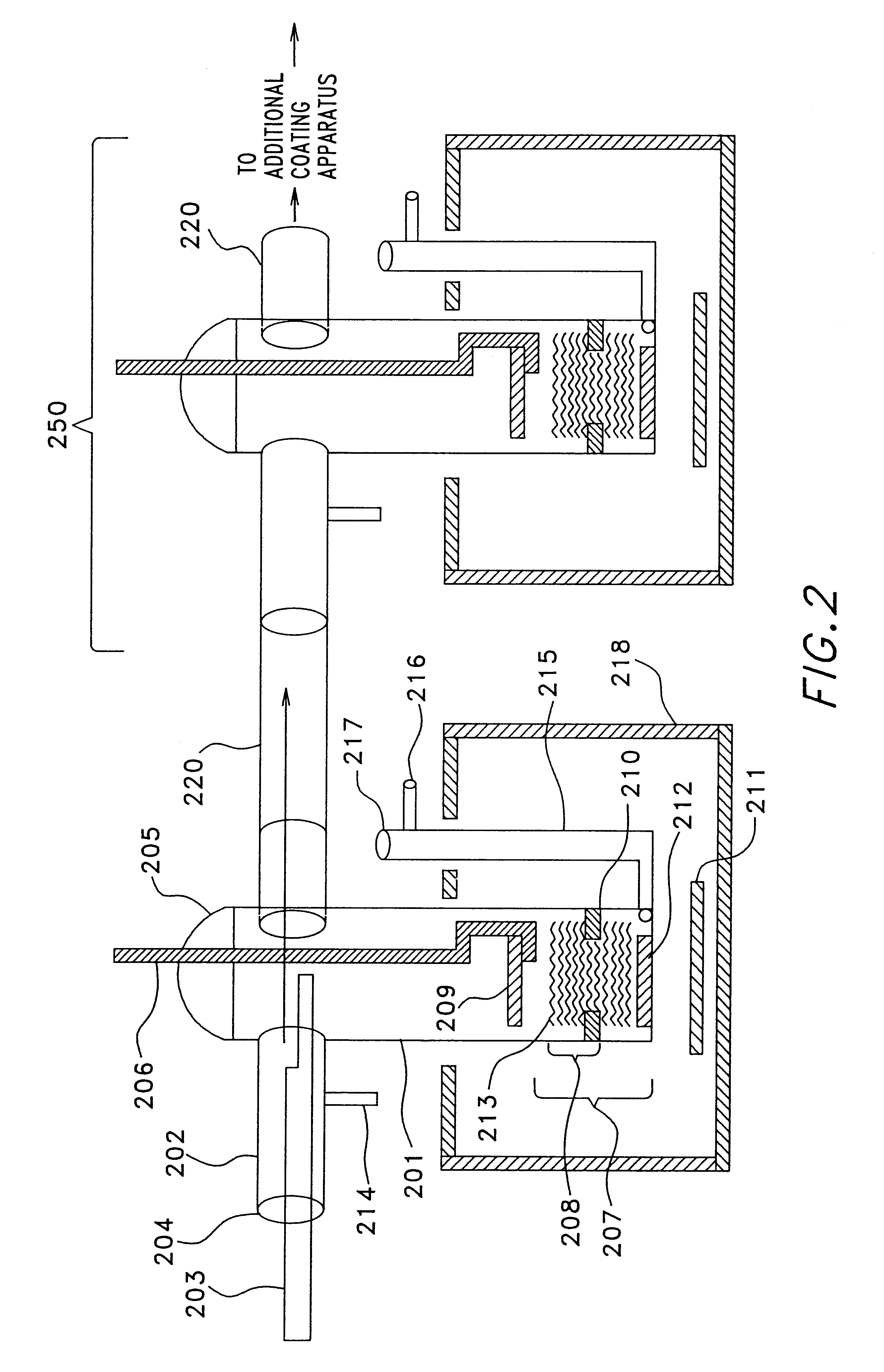Process for Polycrystalline film silicon growth
- Summary
- Abstract
- Description
- Claims
- Application Information
AI Technical Summary
Benefits of technology
Problems solved by technology
Method used
Image
Examples
Embodiment Construction
With reference to FIG. 1, in the preferred embodiment of the invention reactor 113 is a quartz tube 2" in diameter and 15" long, and having one end sealed and the other end fitted with a glass joint. Reactor 113 is placed vertically, with its sealed end residing in a heating mantle and disposed below its open end. Reactor 113 is charged with at least 0.012 grams of iodine crystals per cubic centimeter of confinement zone 108 volume and preferably with between 0.030 and 0.060 grams of iodine crystals per cubic centimeter of confinement zone 108 volume. Thus, in a typical experiment, approximately 10 g of solid iodine, which serves as the source of transport vapor 102, is placed into the bottom of reactor 113. A solid silicon plate having a weight of 5% or greater the weight of iodine added is also placed in the bottom of reactor 113. The amount of silicon added is adjusted such that the mole ratio of silicon to iodine exceeds 1:4. The silicon plate serves as coating source reagent 10...
PUM
| Property | Measurement | Unit |
|---|---|---|
| Temperature | aaaaa | aaaaa |
| Thickness | aaaaa | aaaaa |
| Pressure | aaaaa | aaaaa |
Abstract
Description
Claims
Application Information
 Login to View More
Login to View More - R&D
- Intellectual Property
- Life Sciences
- Materials
- Tech Scout
- Unparalleled Data Quality
- Higher Quality Content
- 60% Fewer Hallucinations
Browse by: Latest US Patents, China's latest patents, Technical Efficacy Thesaurus, Application Domain, Technology Topic, Popular Technical Reports.
© 2025 PatSnap. All rights reserved.Legal|Privacy policy|Modern Slavery Act Transparency Statement|Sitemap|About US| Contact US: help@patsnap.com



